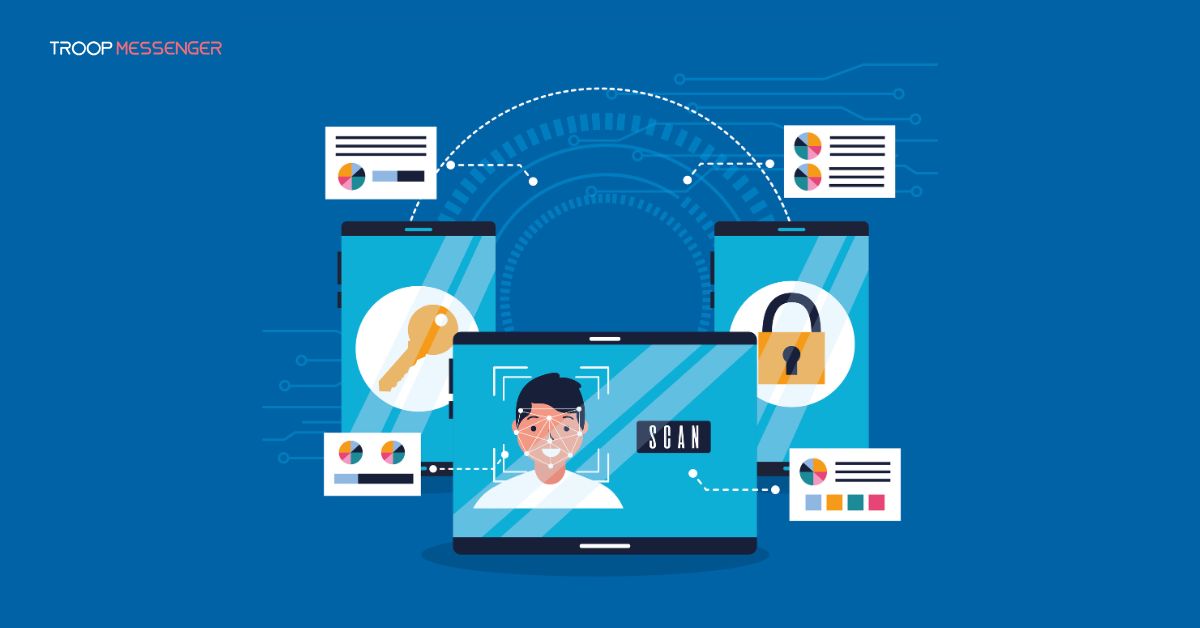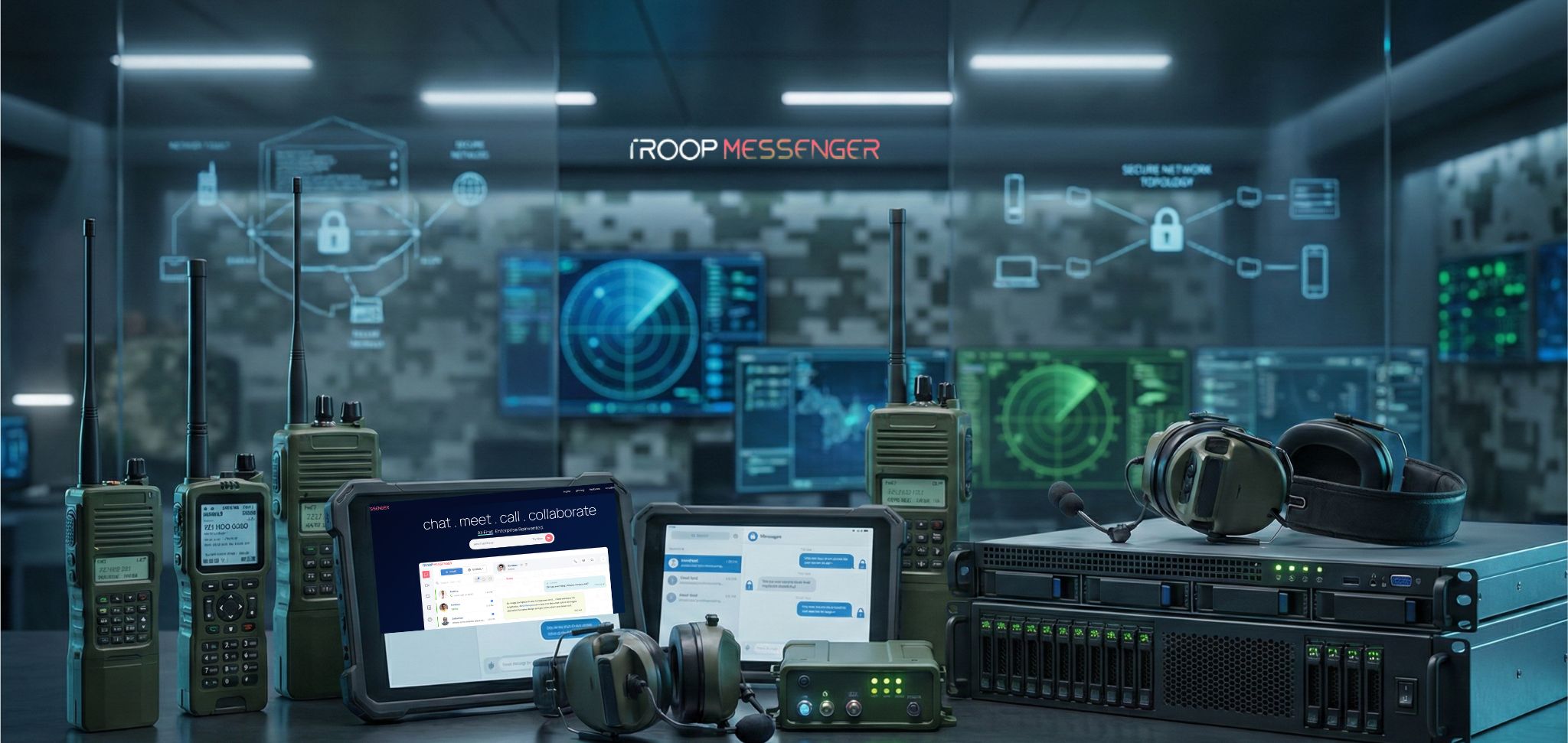Connect with us

How Biometrics vs Traditional Passwords: Which Is Best for Ensuring Secure Team Communications?
Communication between team members is more important now than it has ever been, with one in five employees working remotely and a prediction that by 2025, some 3.6 million Americans will be telecommuting. Since 2002, there has also been a vertiginous rise in the popularity of team communication apps like Zoom, Google Hangouts, and Troop Messenger, which allow for numerous means to chat or message in one-on-one and group settings. Troop Messenger shows how important security is since all chats, calls, and conferences are end-to-end encrypted. Biometrics is another security solution that is growing in popularity. Rather than relying on passwords, biometric systems are based on unique characteristics of users that cannot be replicated. If you wish to know more about how biometric systems compare to traditional passwords in team communications, read on!
What are Biometric Systems?
Biometrics rely on personal characteristics such as the voice, face, iris, fingerprint, or palmprint, obtained from a scanner or camera. These characteristics identify a person and grant them access to a communication app or shared workspace. Once biometric data is obtained from a person, a special algorithm selects characteristics to create a template. The system then verifies the person trying to gain access by referring to its database. It can do so in a second, even though it is comparing the data obtained to literally hundreds of millions of biometric data contained in its database. Systems can also rely upon behavioral identifiers, which analyze the way people perform tasks such as walking and talking.
How Can One Tell if a Biometric System is Safe?
When companies are selecting biometric systems to keep their communication apps and other data safe, they look at three main characteristics: the False Rejection Rate, False Acceptance Rate, and Equal Error Rate. The False Rejection Rate is the rate of failure to recognize the correct user. The False Acceptance Rate is the rate at which a system lets the wrong user into the communication system. Finally, the Equal Error Rate represents the ideal number of errors between False Rejection and False Acceptance rates. All the different biometric data (including face, palmprints, fingerprints, and similar) have different values for each of these rates.
Where Are Biometric Systems Currently Used?
Currently, biometric systems are used extensively by governments, especially in border control and travel management systems to ensure security at airports, seaports, and other border checkpoints. They are also commonly used in mobile phones, with many manufacturers integrating this system to offer users a seamless, fast, safe way to access their devices. With a glance or quick touch, users can authenticate attractions, unlock devices, and boost the user experience. Biometrics can also be used to access communications systems such as Slack, whose mobile app supports biometric login on compatible devices. Users can enable fingerprint or facial recognition to access workspaces on their smartphones and tablets quickly. Zoom also offers touch ID and face ID support for mobile apps and compatible devices. Google Workspace, meanwhile, can be configured to use biometric authentication via mobile device management solutions.
Biometrics and SSO
Biometrics also works well with Single Sign-On (SSO) solutions, which allow users to log in to numerous applications and websites via one-time user authentication. When employees do not use SSO, they are forced to remember multiple passwords for different apps and websites. This can lead to unsafe practices, such as using simple or repetitive passwords for different accounts. Users can also forget or mistype their passwords when logging in to a service, leading to frustration and time wastage. Those who forget their passwords are often forced to make requests to retrieve or reset their passwords, which can waste the time of in-house IT staff. With SSO, the risk of forgetting passwords is vastly reduced.
What Are the Advantages of Biometric Security for Communications?
Incorporating biometrics into current communication has various advantages, one of which has already been mentioned: safety. It is impossible to replicate biometric data, so unauthorized users are unable to access apps and shared documents. Because biometric traits are linked to a person, they cannot easily be transferred or shared the way passwords can. Biometrics are also convenient. Users do not have to remember and organize passwords; obtaining entrance to communication apps is effortless. The user experience becomes more pleasant since access is instant and minimal effort is required. Biometric methods do not have to be used alone. As such, they can be integrated into multi-factor authentication systems, which rely on multiple factors for more robust security. Methods can vary widely, with organizations currently using everything from physical to behavioral traits. For instance, a mere typing pattern can indicate the identity of the person carrying out this action. Finally, biometric systems last throughout a person’s lifetime. They reduce the need to change passwords frequently.
What Risks Do Biometric Systems Carry?
As is the case with all authentication methods, biometrics also carry specific risks. For one, because biometric data is unique to each person, once it is stolen, it is permanently compromised. Unlike a password, it cannot simply be reset. As such, the processing of this data requires special safety and organizational measures to avoid theft. As mentioned above, biometric systems sometimes produce false positives or negatives. These errors can impact the user experience and security, while also posing extra work for IT teams. Another problem is forgery. Unless communications systems use advanced biometric technology (ABT), they are at risk of forgery. Fingerprints or facial features can potentially be replicated via photographs, 3D models, and silicone fingerprint replicas. Sumsub’s 2023 Identity Fraud Report has shown that there has been a tenfold increase in the number of deepfakes detected worldwide across all industries from 2022 to 2023. Cultural reasons, personal preferences, and anxiety about possible leaks can all cause tension between organizations and employees who do not wish to provide their data. Finally, although biometric systems are relatively stable, features can occasionally change due to events such as surgical procedures, aging, or injury. Of course, this problem can be solved simply, by asking employees to provide their data once again.
What Risks Do Traditional Password Systems Have?
Of course, when discussing the risks of biometrics, it is vital to compare risks to those posed by traditional password systems. There are multiple attack types, including brute force attacks, in which attackers use automated tools to guess passwords by trying multiple combinations. These attacks can give cybercriminals unauthorized access to personal data and lead to the spread of malware across networks. Criminals can hijack communications systems for malicious purposes and cause grave damage to a company’s reputation. Cybercriminals can also use phishing attacks to trick members into revealing their login credentials. They can then wreak havoc by sending others messages that can cause conflict or lead other users to share information, thinking they are dealing with a trusted team member. Another problem is weak passwords, which can result in identity theft and financial losses. Weak password recovery processes such as easily guessable security questions can be exploited by criminals to obtain unauthorized access.
How Can Companies Mitigate Biometric System Risks?
Companies wishing to avail of the enhanced security and speed afforded by biometric systems for their communications apps can take several steps to reduce associated risks. These include employing multifactor authentication and combining biometrics with other methods such as one-time passcodes. Companies can also embrace behavioral biometrics, which can help detect manipulations such as deepfake usage. Finally, they can also rely on liveness detection. The latter verifies that data is being obtained from a live person, not a static 3D printed item, static image, or video. Liveness detection systems can analyze natural movements and easily spot enhanced images.
How Can Companies Mitigate The Risks of Traditional Passwords?
Companies wishing to maintain the security of their communication apps and shared workspaces via traditional passwords can also take steps to reduce their vulnerability to cybercriminals. Steps to take include setting up strict password policies, which indicate how employees should create and manage passwords. Companies can also use a password manager like Lastpass and password generators to ensure that passwords are difficult to hack. They can additionally use a second factor like mobile authentication to add an extra layer of security into the equation. Employee training is also key. Employees need to understand why protecting the safety of passwords is so essential and know the consequences of hacking. Some companies make use of phishing simulations to show employees what the tell-tale signs of phishing messages are and to discover current vulnerabilities in user behaviors.
Biometric systems, when used alongside messaging and group work apps, go a long way toward improving security and user-friendliness. Unlike traditional passwords, they are not at risk of loss or subject to forgetfulness. However, as seen above, they are not free from risks. Companies wishing to utilize these systems should take care to promote safety by employing multifactor authentication, liveness detection, and behavioral biometrics. Those who wish to traditional passwords, meanwhile, can also embrace strategies such as multifactor authentication and smart password management systems.








